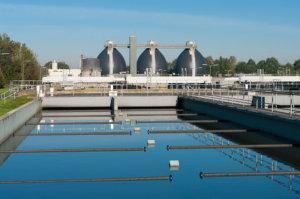As the number of people on the globe continues to increase, the demand for clean water does the same. It comes as no surprise that water pollution and declining water quality have become a global concern.
Let’s take a closer look at the water and wastewater industry as well as how the facilities rely on temperature sensors to meet the increasing need for clean water.
What’s the Difference Between Water Treatment vs Wastewater Treatment?
The combination of an increasing population, more demand for water, and higher water pollution underscore the importance of water and wastewater treatment plants. While used interchangeably, water treatment plants and wastewater treatment plants have distinct differences:
- Water treatment plants are those that improve the quality of water from rivers, lakes and reservoirs for an end-to-end application. These treatments can be applied to a myriad of industrial functions, including processing, filtration, dilution, cooling, product transport and raw material clean-up.
- Wastewater treatment involves the collection of gray water, sewage, and other polluted water from industrial and municipal sources and improving water purification to a level that allows it to be reused for industrial purposes, agricultural purposes, and even as potable water. In other words, wastewater treatment involves the purification of contaminated water.
Whether water treatment or wastewater treatment, both rely on the careful and calculated monitoring of all aspects of their processes. Much of the onus falls onto different wastewater and water treatment sensors and switches that are used to manage, control, and monitor liquids. And at almost every stage in the wastewater and water treatment process, you can find water temperature sensors.

An Overview of Temperature Sensors in the Water Industry
Reliable temperature sensors are extremely important. Simply put, a temperature sensor is a device that delivers accurate term aperture measurements in a readable form through an electrical signal. In general, there are two different types of temperature sensors:
- Non-contact temperature sensors. As the name suggests, these sensors do not need to be in physical contact to deliver readings. Instead of physical contact, these sensors rely on electrical, magnetic, sonic, or other technologies to detect temperature fluctuations.
- Contact temperature sensors. On the other hand, these types of sensors do require physical contact to deliver temperature readings.
Within the contact temperature sensor category, there are three types:
- Thermocouples (TCs)
- Thermistors
- Resistive temperature detectors (RTDs)
How Does Temperature Affect Wastewater Treatment?
It’s imperative for wastewater treatment facilities to maintain appropriate temperatures throughout the continuous process. To do so, these facilities must use thermoregulatory devices. The most effective cooling water treatment process involves using industrial chiller systems to effectively maintain the proper temperatures.
Failure to do so can lead to undesirable water outcomes. For instance, if the temperature in wastewater rises too much, the effect on the essential bacteria or disinfecting solutions can be disastrous. Aside from killing off important microorganisms tasked with breaking down organic materials, too high temperatures can also:
- Reduce the ability of bacteria to flocculate sediment,
- Damage to filtration filaments, and
- Inhibit the growth of special bacteria
In the end, abnormal water temperatures greatly reduce the efficiency and effectiveness of the water treatment process. And this leads to a poor purification process that doesn’t meet the standards for discharging water into other bodies.
How Temperature Sensors Are Used?
To help ensure the proper water temperature and other important parameters are maintained, several different types of sensors are employed in sewerage facilities. These sensors work to accurately measure and monitor:
- Water pressure
- Water flow
- Water quality
- Water level
As previously mentioned, these sensors are critical because the wastewater facility fans, turbines, pumps, mixers and other machinery run nonstop.

Resistive Temperature Detector Sensors for Wastewater Monitoring
For example, resistive temperature detectors (RTDs) are employed to make sure this equipment doesn’t overheat. RTDs are suitable for this application specifically because they can weather the challenges associated with high-vibration environments and applications.
Temperature Sensors Help Ensure Proper Environment
At the same time, critical anaerobic and aerobic bacteria in digesters achieve optimized performance within certain temperature ranges. Industrial temperature sensors and bimetallic dial thermometers help make sure the environment isn’t too cold or hot.
Key Takeaways
- There are two broad categories of temperature sensors: contact and non-contact sensors.
- Both water and wastewater treatment facilities rely on water temperature sensors/
- It’s important for wastewater treatment facilities to maintain proper temperatures throughout the continuous process.
- If wastewater treatment temperatures are too high, it can kill off vital microorganisms designed to break down organic materials and ultimately result in the water not meeting the standards for discharge into other bodies.
- Two common temperature sensors are non-contact thermocouple temperature sensors and resistive temperature detectors.
Contact Temp Pro today to learn more about our state-of-the-art temperature sensors.

